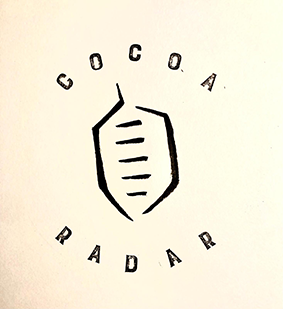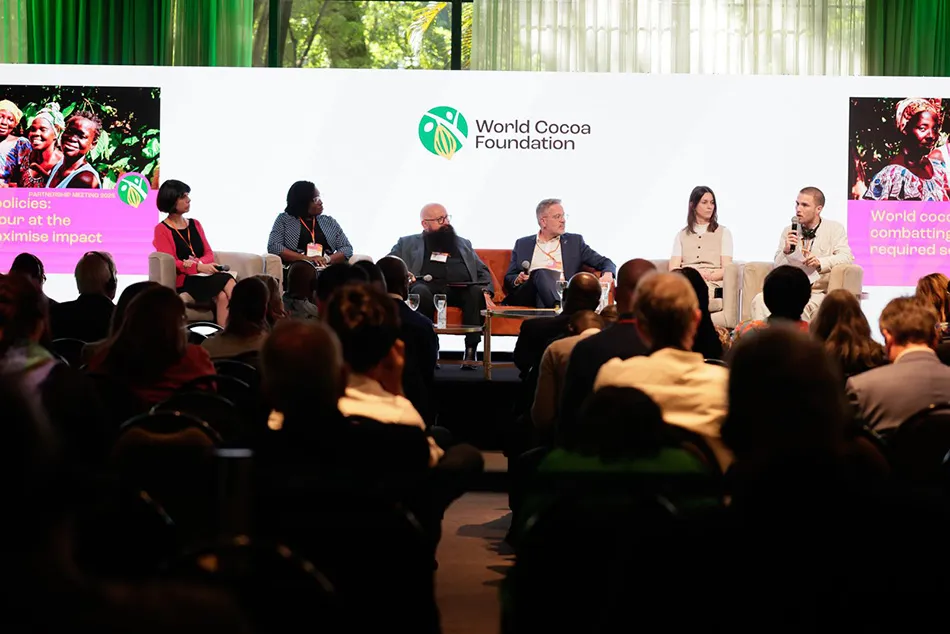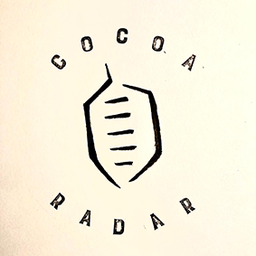Collaboration between industry and governments
In the penultimate session on child labour, moderator Tim McCoy, Director, Cocoa Partnerships, Hershey Trading GmbH, made the point that the cocoa sector remains united in its commitment to combat the issue. Although the sector is in a better place today than it was two decades ago, child labour is still a problem and the numbers speak for themselves, he said.
Approximately 1.56 million children are still engaged in child labour on cocoa farms in Cote d’Ivoire and Ghana, according to the most recent research.
McCoy emphasized the distinction between acceptable child work and harmful child labour, highlighting the importance of context, such as family farming and educational continuity. Factors contributing to child labour include poverty, lack of education, cultural practices, and seasonal labor demands.
Efforts to combat child labour include industry initiatives like child labour monitoring systems, community support for education, and public-private partnerships.
McCoy said The World Cocoa Foundation's new framework agreement aims to enhance collaboration between industry and governments.
Child Labour Monitoring and Remediation Systems (CLMRS)
Sarah Dekkiche, International Cocoa Initiative, Director of Policy and Partnerships, focused on leveraging and scaling up Child Labour Monitoring and Remediation Systems (CLMRS) in supply chains to meet EU human rights diligence legislation.
She said companies have reduced child labour by 38%, but more is needed. The framework for action between Ghana, Cote d’Ivoire, the US Department of Labor, and the cocoa industry, supported by ICI, aligns private and public sector systems to maximize impact, she said.
Data from administrative and private sources inform national child labour monitoring systems aims to provide welfare services where needed and maintain stability in uncertain times, emphasizing the importance of strategic public-private partnerships.
Public-private partnerships
Peter Nielsen, an Impact Investment Manager at Common Fund for Commodities, mentioned the Development Impact Bond (DIB) model as a potential solution to combat child laboir in the cocoa sector.
The DIB involves funding programmes for outside investors to achieve specific outcome indicators related to child labour reduction, school attendance, and community income. If these targets are met, investors are reimbursed.
He suggested that the (International Labour Organisation) ILO, International Cocoa Initiative, and various stakeholders, including government and private sector entities, could sponsor these programmes.
The DIB shifts focus from input auditing to outcome measurement, encouraging innovation and efficiency. Nielsen also acknowledged the importance of private partnerships and asked for lessons learned from previous implementations to be considered.
Check out all our articles from this year's event in São Paulo
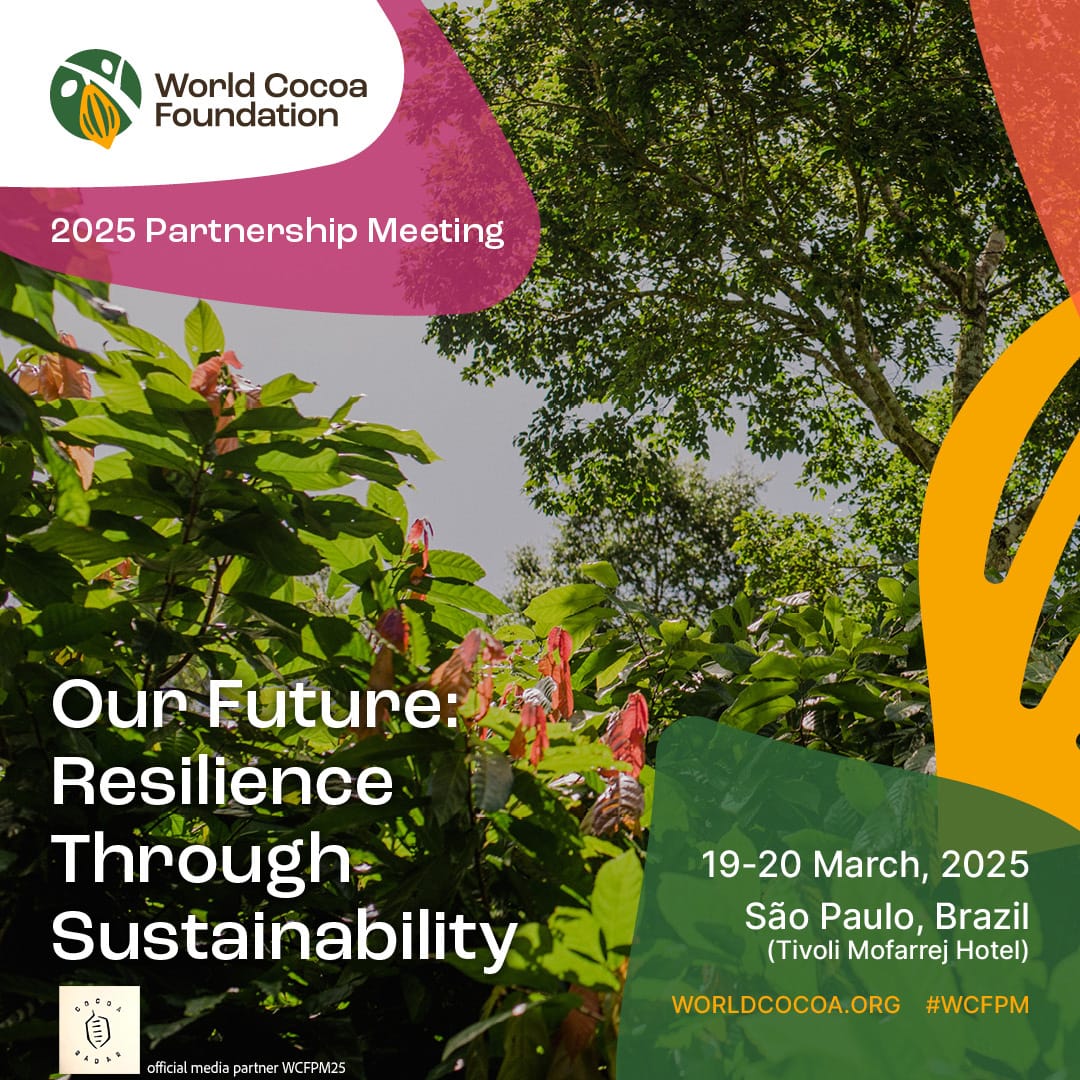
More robust legislation
Mirte Ruesen, Ministry of Foreign Affairs, The Netherlands Senior Policy Advisor Sustainable Production and Trade, said the discussion should focus on the evolution of addressing child labour through voluntary agreements and the shift toward mandatory solutions. Despite initial success with voluntary agreements 13 years ago, the conversation highlighted the need for more robust legislation.
She highlighted the CSDDD initiative as crucial for driving the debate and ensuring responsible business conduct. The Netherlands was noted as the first EU member to implement the CSDDD nationally, engaging stakeholders and using data to ensure effective legislation.
Multi-stakeholder initiatives were seen as essential for successful implementation; Ruesen also echoed the call for public-private partnerships and company measures to complement legislation.

‘Name and shame’
The Chocolate Scorecard is an effective tool for holding the industry accountable for issues such as child labour. Fuzz Kitto from Be Slavery Free is the National co-director of the Chocolate Scorecard and stressed that the tool is now used to highlight good practices rather than just negative ones, which has increased consumer and media interest.
Kitto emphasized the need for a bottom-up approach, highlighting the importance of trust and relationships between farmers, companies, and consumers.
“The chocolate scorecard has evolved from a name-and-shame to a name-and-fame approach, encouraging companies to share their positive efforts,” he said.
“Metrics showed a significant increase in companies reporting child labour data, from 45% in 2023 to 82% in 2024. However, only 30% of companies met their child labour reduction targets this year.”
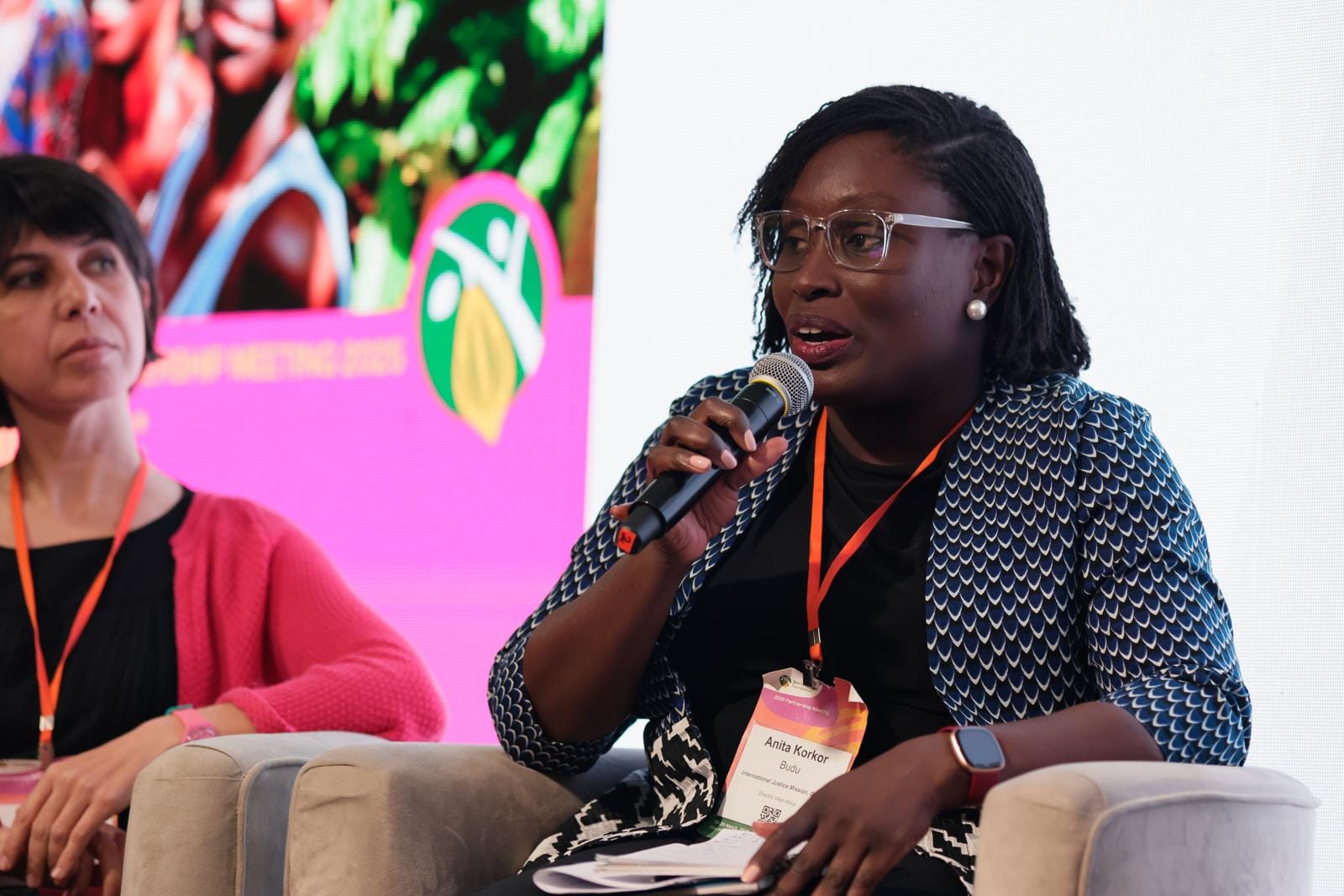
Forced child labour
Anita Budu, International Justice Mission (IJM) Director, West Africa, said the role of the community is essential in combatting issues. IJM is a global organization partnering with local authorities in 19 countries and has made significant progress in tackling forced child labour in Ghana over the past decade.
She emphasized differentiating and categorizing child labour situations, as not all are equally harmful. “IJM has collaborated with the Ministry of Employment and Labor Relations in Ghana to develop standard operating procedures for child labour, distinguishing between community-level and government-level interventions,” she said.
IJM has also worked with the private sector, particularly Tony’s Open Chain, to ensure clean supply chains and risk assessments. Budu stressed the need for collective action, government investment, and effective implementation of policies to protect vulnerable children and end the cycle of child labour.
Mandatory legislation?
The message was clear: public-private partnerships and financial investment are crucial for lasting change. It remains to be seen if mandatory legislation such as the EU's CSDDD will effectively drive scalable solutions to tackle the root causes of child labour in the global cocoa supply chain.\
cocoaradar.com is:
- Official Media Partner - World Cocoa Foundation Partnership Meeting in São Paulo, Brazil, 19-20 March 2025.
- Official Media Partner - Amsterdam Sustainable Cocoa Conference, Chocoa, 4-9 February 2025.
- 'From Our Desk. To Yours'
- Sign-up here for free and upgrade to an annual plan with a 35% discount
